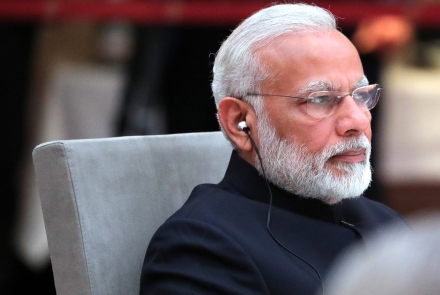
Kremlin.ru on Wikimedia Commons
India plays spoilsport
India’s refusal to enter RCEP threatens the future of the agreement and the economies of its members, Vishesh Agarwal writes.
One of the more memorable slogans of India’s then-prime ministerial candidate for the Bharatiya Janata Party (BJP), Narendra Modi, during the 2014 election campaign was ‘Minimum government, maximum governance’. Several analysts interpreted the slogan as a signal that a Modi-led administration would usher in free market-leaning reforms and focus on economic growth and development.
To a large extent, the Modi administration has not lived up to these expectations. India’s economic growth rate has faltered under Modi’s watch, with quarterly growth falling below five per cent in the September quarter, the lowest recorded in the last six years.
The latest example of this trend is in India’s refusal to join the Regional Comprehensive Economic Partnership (RCEP), a mega-regional Free Trade Agreement (FTA) involving 15 other nations in the region.
So why has India refused to join RCEP, and what does this action tell us about the mindset of the Modi administration?
This question is relevant to other RCEP countries, who must now decide whether to go ahead without India and possibly welcome it at a later stage, or to delay implementing the agreement until India agrees to participate fully.
India’s key concerns about joining the agreement include a lack of safeguards to protect India’s agriculture and industry from a surge in imports, disagreements on the planned year for locking in tariffs, and the lack of a significant agreement on trade in services.
For a country that has deep political divisions on almost every issue, the BJP’s decision to pull India out of RCEP has unexpectedly received unanimous domestic support in India from opposition political parties, as well as from civil society organisations such as farmer groups and industry body associations.
However, for several reasons, Modi’s announcement that India would not join RCEP earlier this month in Bangkok did come as a surprise to some analysts. In late October, a report by a Department of Commerce appointed High-Level Advisory Group recommended that “ … it may not be an option to keep out of [RCEP] anymore, because this will exclude India from a large regional market which is also connected with the rest of the industrial world”.
The report highlighted the importance the department places on the role of regional FTAs in economic growth, stating that “… [we] need to recognise that the road to being a global player, and sustaining high growth of a major economy, is via competitiveness and trade, particularly an increasing share of our exports in global value chains”.
In the lead up to the RCEP meeting in Bangkok, India’s Commerce Minister Piyush Goyal, while acknowledging political opposition to the agreement, argued that “we [must] also appreciate the way the world is rapidly globalising and inter-dependencies are being created. In such a scenario, standing outside the room will not benefit us. India cannot stop its engagements and trade with the rest of the world. We need to develop the capability to prevent unnecessary influx of Chinese goods”.
India’s refusal to join RCEP highlights that even free market-leaning policymakers in India, who make up a majority of central and state legislatures, will face difficulty in pushing through economic reform under this government.
However, a slowdown in domestic economic growth has forced the Modi administration to implement some market-leaning reforms despite political opposition, including significant reduction in corporate taxes and disinvestment in several state-owned enterprises.
In a Novermber 2019 speech, India’s External Affairs Minister, Subrahmanyam Jaishankar, defended India’s decision to opt out of RCEP, arguing that “… no agreement at this time was better than a bad agreement”.
He also clarified that the decision to hold off on entering RCEP was not indicative of India moving “ … back to the old dogmas of economic autarky and import substitution … [and that] India already has FTAs with 12 out of the 15 RCEP partners”. Both Jaishankar and Goyal have indicated that India is open to further negotiations and joining RCEP if some of its key concerns are met.
With rising trade tensions between the US and China and a slowdown in global economic growth, greater trade integration of economies in the Asia-Pacific is a key source of future growth in the region.
As US protectionism erodes confidence in the multilateral rules-based trading system, mega-regional FTAs have emerged as a key instrument for reducing trade policy uncertainty and supporting the proliferation of global supply chains.
Moreover, as China’s growth slows due to domestic challenges, India, with its large population size and low level of production per capita, is one of the few countries that has the capacity to replace China as the engine of regional and global growth in the upcoming decades.
India’s growth potential means that RCEP countries must recognise the price of its absence, and that once an agreement is implemented, it will become even more difficult for India’s concerns to be accommodated.
RCEP countries must also keep in mind that even reform-minded policymakers in India face significant political opposition, and therefore need to show flexibility to mitigate some of India’s key concerns if they want to see the agreement succeed.
The bottom line is that India’s inclusion in RCEP would be beneficial for both India and other RCEP countries, and throwing away the entire pie, just because those involved cannot decide who gets exactly what share, is a dangerous idea for growth and prosperity, both in India and the region at large.
Updated: 19 October 2024/Responsible Officer: Crawford Engagement/Page Contact: CAP Web Team












